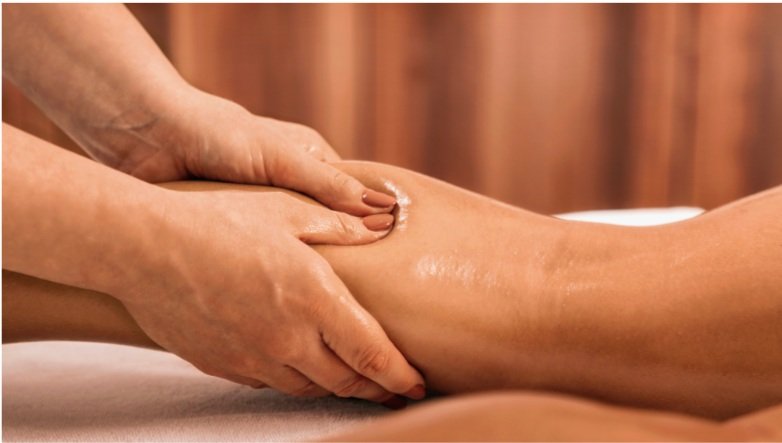Lymphatic Drainage Techniques
Written by Madison Woods, an undergraduate student at UNCW and a Public Health Intern at Going Beyond the Pink. *Disclaimer: This post contains affiliate links. GBTP may earn proceeds from your purchase of linked items.
Lymphatic drainage is meant for general wellness and health, if you have lymphedema please consult a lymphedema specialist.
What is Lymphatic Drainage and Why is it Important?
Lymphatic drainage is a type of massage that encourages healthy flow of fluids in the lymphatic system. This drainage is important because it works to keep the body’s tissue healthy and functioning properly. As the lymphatic system plays a huge role in immunity, it is essential that this system is maintained and taken care of! This gentle massage is done using specific motions and movements against the skin where our lymphatic nodes are found. This form of massage is beneficial to everyone, as it is essential for everyone’s lymphatic system to be healthy and functioning properly.
With breast cancer patients lymphatic drainage practices can be done at home as a wellness habit but these techniques should never be done without consulting a lymphedema specialist if you are at risk for lymphedema or have lymphedema.
Some other ways to promote lymphatic system function include staying hydrated, engaging in physical activity, eating fruits and vegetables and limiting processed foods. Since your lymphatic system is consistently working to keep everything in your body balanced, these tips help the system itself stay balanced and healthy. Drinking plenty of water, eating plant based foods and staying active all keep the fluids and tissues in your body healthy- allowing the lymphatic system to do its work.
What are the Benefits of Lymphatic Drainage?
Removes toxins and bacteria from the skin
Relieves sinus pressure and congestion
Reduces swelling
Increases lymph and blood flow
How Can I Practice Lymphatic Drainage on Myself?
You can begin by preparing for the lymphatic massage. Begin by taking 5 deep breaths to help get your bodily fluids moving. Then take both pointer and middle fingers up below your earlobes (on both sides) and gently slide your fingers down towards your shoulders with light pressure and repeat 5 times. Then place your hands at the back of your neck towards your hairline and gently pull down towards the spin 5 times. For preparing your underarms, pull your palms under your armpit and pull the palm upwards toward the body. Repeat on both sides about 5 times and please note DO NOT do this movement on areas that have been treated for cancer. Lastly, for preparing behind the knees, place both your hands behind your knees so your fingers are pointing towards each other and gently press your hands upwards. Do this about 5 times on each knee.
Upper Body Massage Techniques:
To massage your chest, place your left palm to your right side of your chest above the breast and gently pull upwards to your neck then release. Repeat on the other side.
To massage the shoulder, start with your arm resting on a table/armrest and take the opposite hand to your shoulder of the resting arm. Gently pull over the back of the shoulder and toward the neck. Repeat on the other side.
To massage the upper arm, start with your arm resting and take two fingers from the opposite hand and place it on the inner part of your upper arm. Then gently move your fingers toward the outside of your arm till your hand is wrapped around and then gently move your hand back towards the inside of your arm.
To massage the entire arm, place your hand at the top of your shoulder and use your palm to pull the skin upwards. Move your hand down to the upper arm and stretch the skin upward towards your shoulder and continue down the arm, always massaging the skin upwards and stop at your wrist.
To massage the fingers, start at the base of your finger and use your index finger and thumb to pull gently toward the hand continuing up the finger, remembering to direct the motion towards the hand.
Lower Body Massage Techniques:
To massage your upper leg, begin at the top of your leg (near your groin area) and take one hand on the opposite thigh and gently pull your skin from the inside of your thigh towards the outer thigh and upwards. Repeat this moving down your thigh and stop above the knee; repeat on the other side.
To massage your lower leg, begin with a hand below the knee and the other hand on the back of your calf. Gently stretch the skin upward and continue this motion while working down towards your feet, stopping at your ankle
It is important to end the massage with water or fluids. It is recommended by massage therapists to drink half your body weight in ounces on the day of your massage- plenty before and after. This is important because the manipulation of the muscles dehydrates them and our bodies are made up of 60% of water- so all that movement of water from your muscle tissue into the vascular system is important to replace.
Gua Sha and Lymphatic Drainage
For draining the lymphatic nodes in your face, you can use your hands or a tool like a gua sha. Lymphatic drainage in your face and neck is very helpful in encouraging healthy circulation while promoting production of anti-aging properties, collagen and elastin. Lymphatic drainage in the face is a great way to relieve tension in the face, contour your face, reduce puffiness and promote healthy lymphatic flow. Using a gua sha tool with an oil, almond oil, vitamin e oil, or jojoba oil, is the easiest and best way to perform lymphatic drainage.


